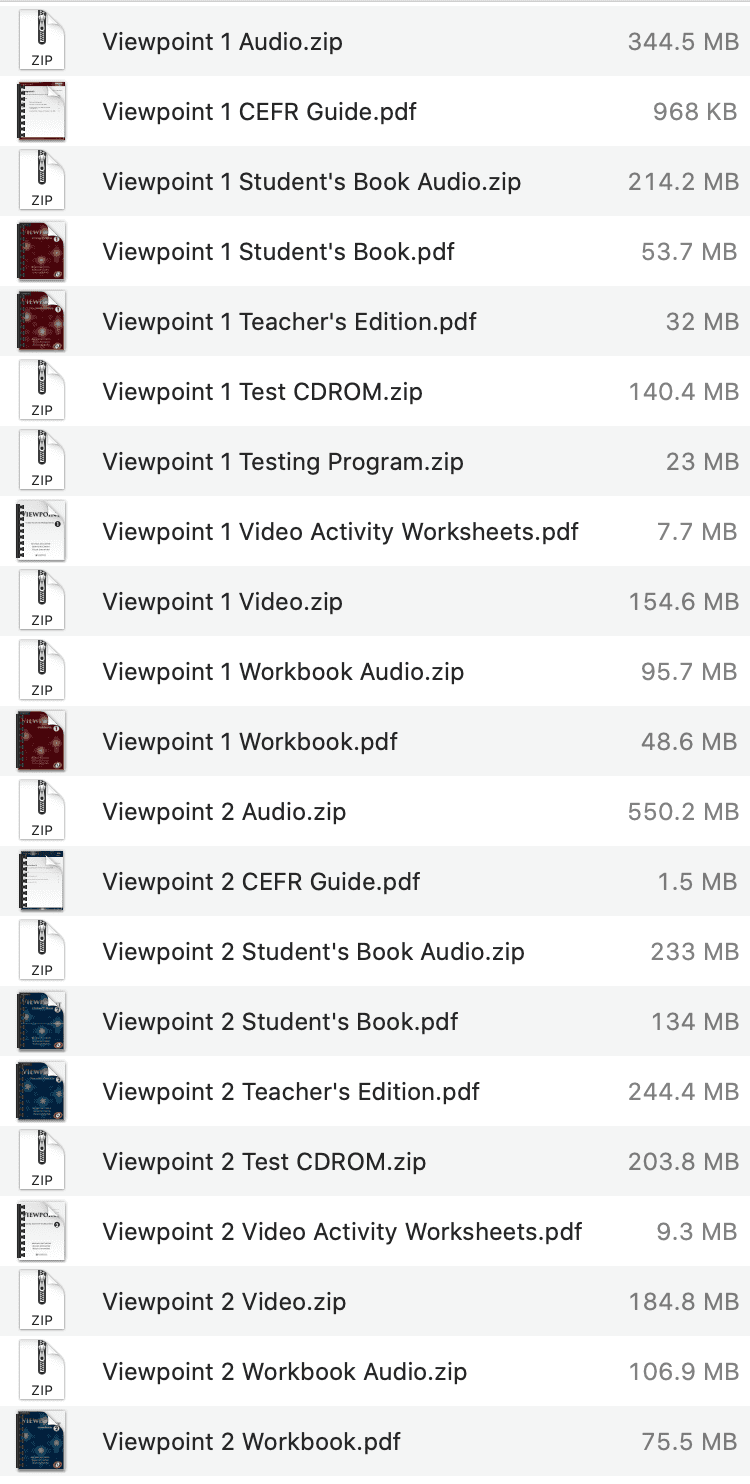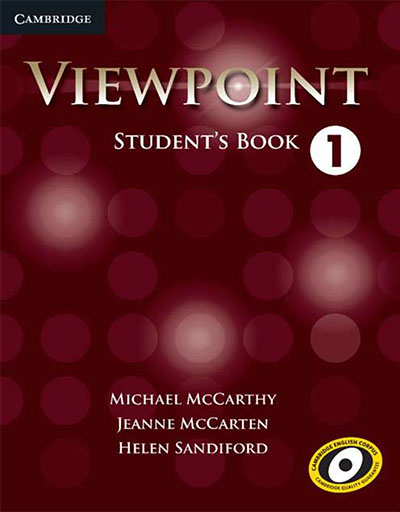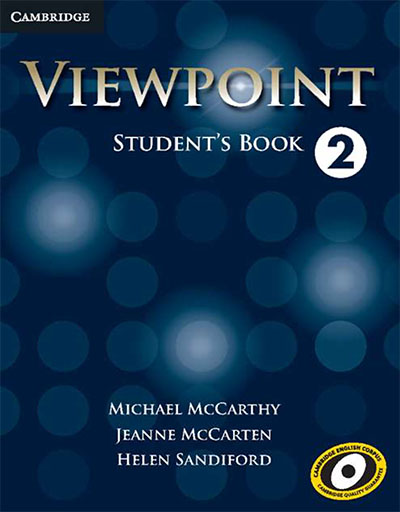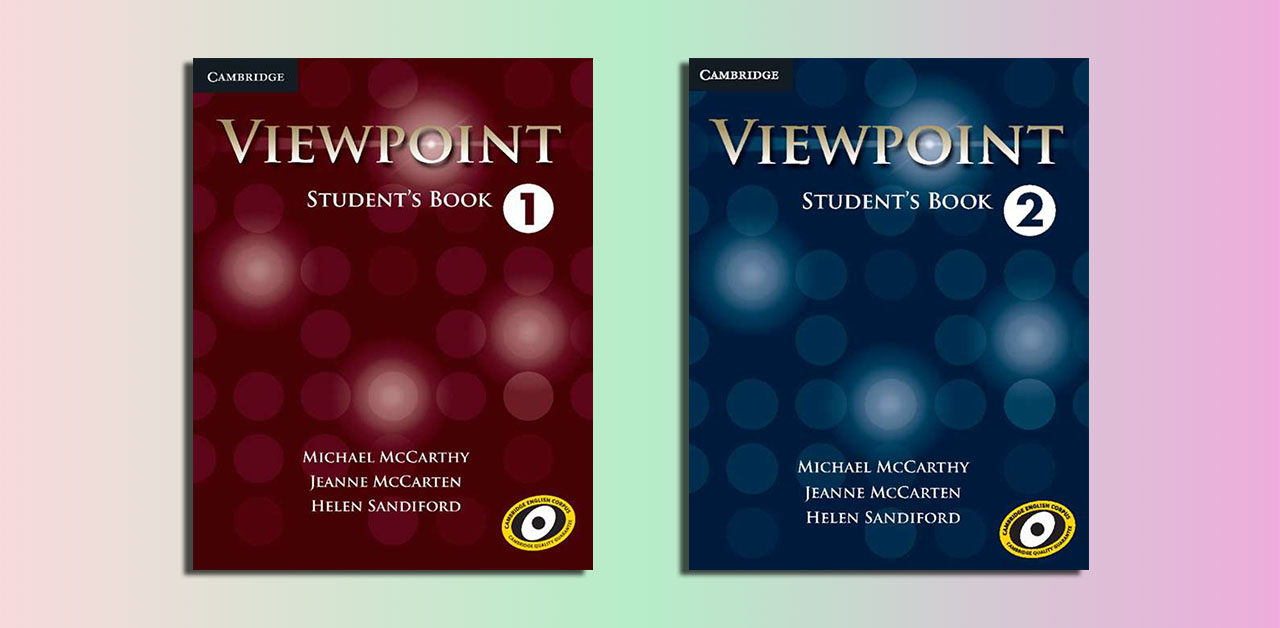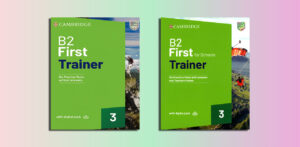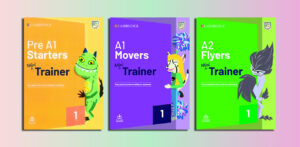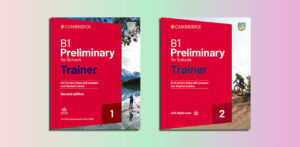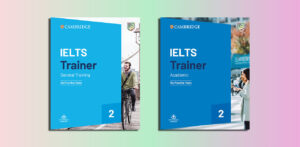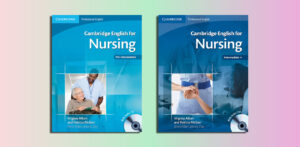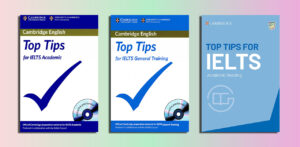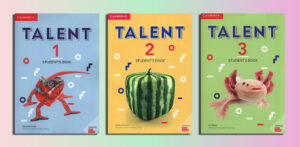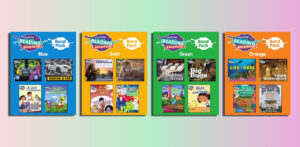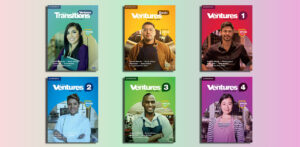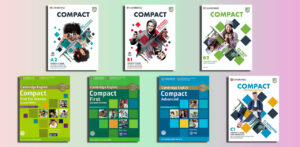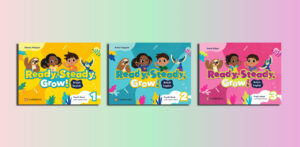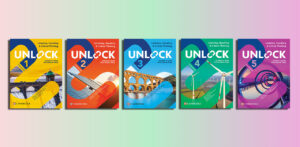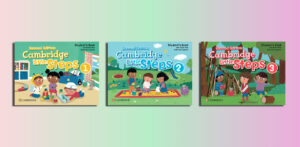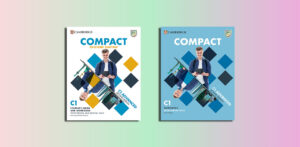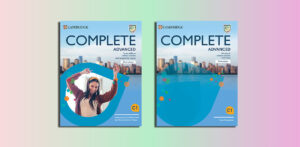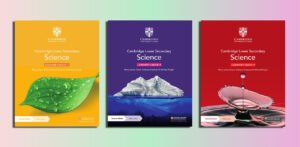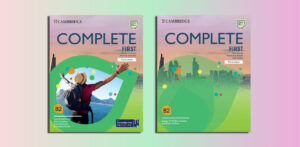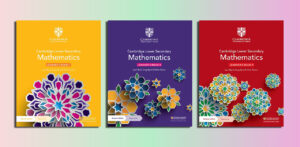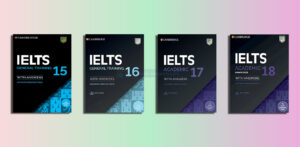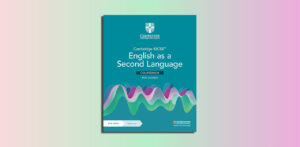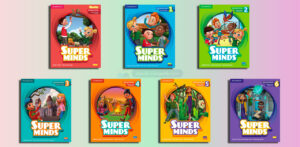Download, Cambridge, Presentation
Download Cambridge Viewpoint Pdf Presentation Plus (B2 / C1)
Viewpoint
Presentation Plus
Viewpoint 1 Presentation Plus
Viewpoint 2 Presentation Plus
PDFs, Resources
Level 1 (B2)
Viewpoint 1 Student’s Book.pdf – Sample: Click
Viewpoint 1 Workbook.pdf – Sample: Click
Audio – CEFR – Student’s Book Audio – Student’s Book – Teacher’s Edition – Test CDRom – Testing Program – Video Activity Worksheets – Video – Workbook Audio – Workbook
Level 2 (C1)
Viewpoint 2 Student’s Book.pdf – Sample: Click
Viewpoint 2 Workbook.pdf – Sample: Click
Audio – CEFR – Student’s Book Audio – Student’s Book – Teacher’s Edition – Test CDRom – Testing Program – Video Activity Worksheets – Video – Workbook Audio – Workbook
✅ Get Viewpoint (PDFs, Resources): $5 / level; $8 / all 2 levels
✅ Get Viewpoint Presentation Plus (Windows): $5 / level; $8 / all 2 levels
๏ Other payment methods: Click here
Overview of the “Viewpoint” by Cambridge
Contents
| ✅ Coursebook: | Viewpoint |
| ✅ Author: | Mike McCarthy, Jeanne McCarten, Helen Sandiford |
| ✅ English type: | American English |
| ✅ Levels: | B2, C1 |
| ✅ Publisher: | Cambridge University Press |
| ✅ For: | Adult, Young Adult |
| ✅ Publication year: | 2012 |
“Viewpoint” by Cambridge University Press is an innovative two-level course in American English designed for adults and young adults, targeting learners at a high intermediate to advanced level of proficiency (CEFR: B2 – C1). It builds on the foundation laid by the “Touchstone” series, a four-level course that takes students from beginner to intermediate levels (CEFR: A1 – B1), creating a comprehensive six-level series that spans CEFR A1 to C1. Authored by Michael McCarthy, Jeanne McCarten, and Helen Sandiford, “Viewpoint” is grounded in extensive research from the Cambridge English Corpus, ensuring that the language taught is natural, authentic, and relevant.
The course is crafted to help learners become effective communicators by offering a carefully structured syllabus that covers grammar, vocabulary, speaking, and writing. It emphasizes practical conversation strategies to manage a wide range of interactions, both formal and informal, and includes a specialized writing syllabus focused on the skills and processes needed for successful academic writing, particularly in examination contexts. The program integrates listening, speaking, and reading practice, supported by a systematic vocabulary approach that encourages learner independence through strategies like the “Vocabulary Notebook.”
“Viewpoint” is designed to be flexible and engaging for both teachers and students. It offers a variety of delivery options—print, online, or a blended approach—allowing instructors to tailor the course to their needs. The online component, available through the Cambridge Learning Management System (CLMS), provides an immersive environment with personalized grammar and vocabulary tasks, immediate feedback, and authentic video content, such as topic-based videos from Bloomberg. Additional resources include online workbooks, a video program with conversations and presentations, and a comprehensive testing package with grammar, speaking, and writing assessments.
The course stands out for its fresh approach to English language teaching, incorporating real-world communication skills and a focus on transitioning learners from dependent to independent learning. It is supported by extensive teacher resources, including a “Teacher’s Guide to Blended Learning” and lesson-by-lesson guides, making it easy and enjoyable to teach while delivering proven results.
Viewpoint 1 Student’s Book
Who is suitable for “Viewpoint”?
“Viewpoint” by Cambridge University Press is suitable for adults and young adults who are at a high intermediate to advanced level of English proficiency, specifically aligning with the CEFR (Common European Framework of Reference for Languages) levels B2 (Upper-Intermediate) to C1 (Advanced). This makes it an ideal choice for learners who already have a solid foundation in English—such as those who have completed an intermediate course like “Touchstone” (A1–B1)—and are looking to refine their skills for more complex, real-world communication.
The course is particularly well-suited for:
- Learners aiming to improve fluency and accuracy in speaking and writing, with a focus on practical conversation strategies and academic writing skills.
- Students preparing for English exams that require advanced language proficiency, thanks to its structured writing syllabus and comprehensive practice in grammar and vocabulary.
- Independent learners who want to take greater control of their language development, as it encourages strategies like vocabulary building and self-directed study.
- Professionals or students needing to communicate effectively in formal and informal settings, given its emphasis on authentic, corpus-informed language and real-world scenarios.
- Teachers and institutions seeking a flexible, engaging curriculum that can be delivered in print, online, or blended formats, catering to diverse classroom needs.
In short, “Viewpoint” is designed for motivated learners who are ready to transition from intermediate English to a more advanced level, equipping them with the tools to become confident, effective communicators in academic, professional, or everyday contexts.
The benefits of “Viewpoint”
“Viewpoint” by Cambridge University Press offers a range of benefits for high intermediate to advanced English learners (CEFR B2–C1), as well as for teachers and institutions. Here are the key advantages:
For Learners
Enhanced Communication Skills:
- Focuses on practical conversation strategies, enabling learners to manage a wide variety of interactions—formal and informal—with confidence and fluency.
- Develops speaking skills through real-world scenarios and authentic language drawn from the Cambridge English Corpus.
Strong Writing Development:
- Includes a specialized writing syllabus that teaches the skills and processes needed for effective academic writing, making it valuable for exam preparation and higher education.
- Encourages clarity, structure, and coherence in written expression.
Comprehensive Language Mastery:
- Covers grammar and vocabulary systematically, with a research-backed approach that ensures learners encounter natural, frequently used English.
- Builds learner independence through tools like the “Vocabulary Notebook,” fostering strategies for long-term retention and self-directed study.
Engaging and Relevant Content:
- Incorporates authentic video material (e.g., Bloomberg clips) and diverse reading and listening activities, keeping learners motivated and connected to real-world contexts.
- Offers topics and tasks that resonate with adult and young adult interests.
Flexibility and Accessibility:
- Available in multiple formats (print, online, or blended), allowing learners to study in a way that suits their preferences and schedules.
- The online workbook and Cambridge Learning Management System (CLMS) provide personalized practice with immediate feedback, enhancing the learning experience.
- Transition to Independence:Helps learners move from guided instruction to autonomous learning, preparing them for advanced study or professional environments where self-reliance is key.
For Teachers
Ease of Teaching:
- Comes with detailed teacher resources, including a “Teacher’s Guide to Blended Learning” and lesson-by-lesson plans, making preparation straightforward and efficient.
- Designed to be enjoyable to teach, with a fresh approach that keeps classrooms dynamic.
Customizable Delivery:
- Supports various teaching environments—traditional, online, or hybrid—giving instructors flexibility to adapt to their students’ needs.
- Includes a robust testing package (grammar, speaking, writing) for assessing progress and tailoring lessons.
Proven Effectiveness:
- Grounded in corpus research, ensuring the material is reliable and yields measurable results in language improvement.
- Builds on the success of the “Touchstone” series, offering a seamless progression for students and a trusted framework for educators.
Overall Benefits
- Holistic Skill Development: Integrates listening, speaking, reading, and writing, providing a well-rounded learning experience.
- Preparation for Real-World Success: Equips learners with the language and skills needed for academic pursuits, professional settings, or everyday communication at an advanced level.
- Motivation and Engagement: Combines modern tools (videos, online platforms) with a structured curriculum, keeping learners invested in their progress.
In summary, “Viewpoint” delivers a powerful combination of practical language skills, learner autonomy, and teaching support, making it an effective and enjoyable tool for advancing English proficiency.
Viewpoint 2 Student’s Book
Effective learning strategies for “Viewpoint”
To maximize the benefits of “Viewpoint” by Cambridge University Press, learners can adopt effective strategies tailored to its structure and resources. Since the course targets high intermediate to advanced learners (CEFR B2–C1) and emphasizes practical communication, writing, and independent learning, here are some strategies to enhance the learning experience:
1. Leverage the Structured Syllabus
- Set Clear Goals: Break down the course into manageable sections (e.g., grammar, vocabulary, speaking) and set specific objectives for each unit, such as mastering a conversation strategy or writing a cohesive paragraph.
- Follow the Sequence: Work through the units in order, as “Viewpoint” builds progressively from high intermediate (B2) to advanced (C1) skills, ensuring a logical development of language proficiency.
- Review Regularly: Revisit completed units to reinforce grammar rules and vocabulary, using the provided exercises as a benchmark for progress.
2. Maximize Speaking and Conversation Practice
- Practice Conversation Strategies: Actively apply the taught strategies (e.g., turn-taking, agreeing/disagreeing) in real-life or simulated conversations with peers, language partners, or tutors.
- Record Yourself: Use the video and audio components as models—record your responses to speaking tasks, then compare them to the course examples to refine pronunciation and fluency.
- Role-Play Scenarios: Pair up with a classmate or friend to role-play the real-world situations presented in the course, boosting confidence in formal and informal settings.
3. Strengthen Writing Skills
- Follow the Writing Process: Use the step-by-step writing syllabus—brainstorm, draft, revise, and edit—to build strong habits for academic or professional writing.
- Seek Feedback: Share your written assignments (e.g., essays, reports) with a teacher, peer, or online community to get constructive input, aligning with the course’s focus on process improvement.
- Analyze Model Texts: Study the sample writings in “Viewpoint” to identify structure, vocabulary, and tone, then emulate these in your own work.
4. Build Vocabulary Effectively
- Use the Vocabulary Notebook: Actively maintain and expand your notebook as suggested in the course—record new words, their meanings, and example sentences, then review them weekly.
- Contextual Learning: Practice new vocabulary in sentences or short stories rather than memorizing lists, reflecting the corpus-based, natural language approach of “Viewpoint.”
- Incorporate Multimedia: Watch the Bloomberg videos or other online content to see vocabulary in action, reinforcing retention through visual and auditory exposure.
5. Engage with Multimedia Resources
- Active Listening: When using the video or audio materials, listen first for gist, then again for detail—note new phrases or expressions to discuss or practice later.
- Online Workbook: Complete the personalized tasks on the Cambridge Learning Management System (CLMS) regularly, using the instant feedback to correct mistakes and refine skills.
- Supplement with Real-World Media: Extend learning by watching English news, podcasts, or shows related to “Viewpoint” topics, connecting course content to broader contexts.
6. Foster Independent Learning
- Self-Assess: Use the course’s testing resources (grammar, speaking, writing) to evaluate your strengths and weaknesses, then focus on areas needing improvement.
- Set a Routine: Dedicate consistent time to “Viewpoint” activities—e.g., 30 minutes daily on vocabulary, an hour weekly on writing—to build momentum and autonomy.
- Explore Beyond the Course: Research topics from the units online or discuss them on platforms like X to deepen understanding and practice advanced language use.
7. Collaborate and Reflect
- Group Study: Form a study group to discuss lessons, practice speaking, and review writing, simulating the interactive classroom environment “Viewpoint” supports.
- Reflect on Progress: Keep a journal to track what you’ve learned, how you’ve applied it, and where you’ve improved, aligning with the course’s goal of transitioning to independent learning.
- Ask Questions: Engage with teachers or peers to clarify doubts, ensuring you fully grasp the material before moving forward.
8. Adapt to Your Learning Style
- Visual Learners: Focus on videos, charts, and the layout of the workbook to visualize concepts.
- Auditory Learners: Emphasize listening exercises and repeat phrases aloud to internalize rhythm and intonation.
- Kinesthetic Learners: Act out dialogues or write by hand in the Vocabulary Notebook to physically engage with the material.
Tips for Success
- Stay Consistent: Regular practice with “Viewpoint”’s integrated components (listening, speaking, reading, writing) ensures balanced improvement.
- Be Patient: Advanced proficiency takes time—celebrate small wins, like mastering a complex grammar point or delivering a fluent presentation.
- Use Teacher Resources: If studying with an instructor, take advantage of their guidance and the “Teacher’s Guide” to align your efforts with the course’s proven methods.
By combining these strategies with “Viewpoint”’s rich resources, learners can effectively develop their English skills, achieve fluency, and gain the confidence to communicate at an advanced level in diverse contexts.
Effective teaching strategies for “Viewpoint”
Teaching “Viewpoint” by Cambridge University Press effectively requires strategies that align with its focus on high intermediate to advanced learners (CEFR B2–C1), its corpus-based content, and its goal of fostering practical communication and independent learning. Here are some effective teaching strategies for instructors to maximize the course’s impact:
1. Utilize the Structured Curriculum
- Follow the Progression: Teach units sequentially to build on prior knowledge, as “Viewpoint” transitions learners from B2 to C1 proficiency with a clear, research-informed structure.
- Set Unit Objectives: Begin each lesson with specific goals (e.g., mastering a grammar point, practicing a conversation strategy) to keep students focused and aware of their progress.
- Integrate Skills: Blend listening, speaking, reading, and writing activities within each session, mirroring the course’s holistic approach to language development.
2. Enhance Speaking and Conversation Skills
- Facilitate Interactive Practice: Use pair or group work to practice conversation strategies (e.g., negotiating, expressing opinions), encouraging students to apply what they learn in real-time.
- Model and Drill: Demonstrate target phrases or intonation from the video/audio materials, then have students repeat and adapt them in their own dialogues.
- Simulate Real-Life Scenarios: Create role-plays based on unit topics (e.g., a job interview, a debate) to make speaking practice relevant and engaging.
3. Teach Writing as a Process
- Break Down Tasks: Guide students through the writing syllabus step-by-step—brainstorming, outlining, drafting, and revising—to build strong habits, especially for academic writing.
- Provide Feedback: Offer constructive, specific comments on student writing, focusing on structure, coherence, and vocabulary use, as emphasized in “Viewpoint.”
- Use Models: Present sample texts from the course, analyzing their features (e.g., transitions, tone) together before students write their own versions.
4. Optimize Vocabulary Instruction
- Encourage Active Use: Have students incorporate new words from the Vocabulary Notebook into speaking or writing tasks, reinforcing retention through application.
- Teach in Context: Present vocabulary as it appears in the corpus-based materials (e.g., dialogues, readings), highlighting collocations and natural usage.
- Gamify Learning: Use quizzes, flashcards, or word games based on unit vocabulary to make memorization interactive and fun.
5. Leverage Multimedia and Technology
- Incorporate Videos: Use the Bloomberg videos and other multimedia as discussion starters—pause to ask comprehension questions or elicit reactions, then tie them to lesson goals.
- Assign Online Work: Integrate the Cambridge Learning Management System (CLMS) for homework, using its personalized tasks and instant feedback to supplement classwork.
- Blend Learning: Combine in-class activities with online components (e.g., workbook exercises) to cater to different learning paces and styles.
6. Promote Learner Autonomy
- Guide Self-Assessment: Encourage students to use the course’s testing resources (grammar, speaking, writing) to evaluate their own progress and identify areas for improvement.
- Teach Study Skills: Show students how to use the Vocabulary Notebook and other tools effectively, fostering habits for independent learning beyond the classroom.
- Assign Projects: Task students with researching a unit topic online or creating a presentation, aligning with “Viewpoint”’s goal of transitioning to self-directed study.
7. Engage and Motivate Students
- Connect to Interests: Relate unit themes to students’ lives or current events, making lessons relevant and sparking discussion (e.g., tie a unit on technology to recent innovations).
- Vary Activities: Mix pair work, group discussions, and individual tasks to keep energy high and address diverse learning preferences.
- Celebrate Progress: Highlight improvements in fluency, accuracy, or confidence to boost motivation, especially as students tackle advanced C1-level challenges.
8. Use Teacher Resources Effectively
- Lean on the Teacher’s Guide: Follow the “Teacher’s Guide to Blended Learning” for lesson plans, pacing, and tips, ensuring a smooth and enjoyable teaching experience.
- Customize Lessons: Adapt activities from the guide to suit your class size, level, or cultural context, taking advantage of the course’s flexibility.
- Administer Tests: Use the provided assessment tools to track student progress, adjusting your approach based on results (e.g., more grammar review if needed).
9. Foster a Collaborative Classroom
- Encourage Peer Learning: Pair stronger students with those needing support for speaking or writing tasks, building a supportive community.
- Facilitate Discussions: Pose open-ended questions from the materials to stimulate critical thinking and advanced language use in group settings.
- Reflect Together: After activities, discuss what worked well or what was challenging, helping students internalize their learning process.
10. Adapt to Student Needs
- Differentiate Instruction: For mixed-ability classes, offer extra challenges (e.g., advanced writing prompts) for C1 learners while providing scaffolding (e.g., sentence starters) for B2 students.
- Monitor Pace: Adjust lesson speed based on student comprehension—spend more time on complex grammar or writing if the class struggles, using “Viewpoint”’s depth to guide reteaching.
- Solicit Input: Ask students for feedback on what they find most useful or difficult, tailoring your methods to their preferences within the course framework.
Tips for Success
- Stay Organized: Plan lessons with the course’s clear structure in mind, balancing new material with review to maintain momentum.
- Be Flexible: Use the blended options (print, online) to pivot between in-person and remote teaching as needed, ensuring continuity.
- Keep It Enjoyable: Embrace “Viewpoint”’s fresh, engaging approach—bring energy to lessons to mirror its design as a course that’s “easy and enjoyable to teach.”
By employing these strategies, teachers can fully harness “Viewpoint”’s strengths—its research-backed content, multimedia resources, and focus on real-world skills—to help students achieve advanced English proficiency with confidence and independence.

